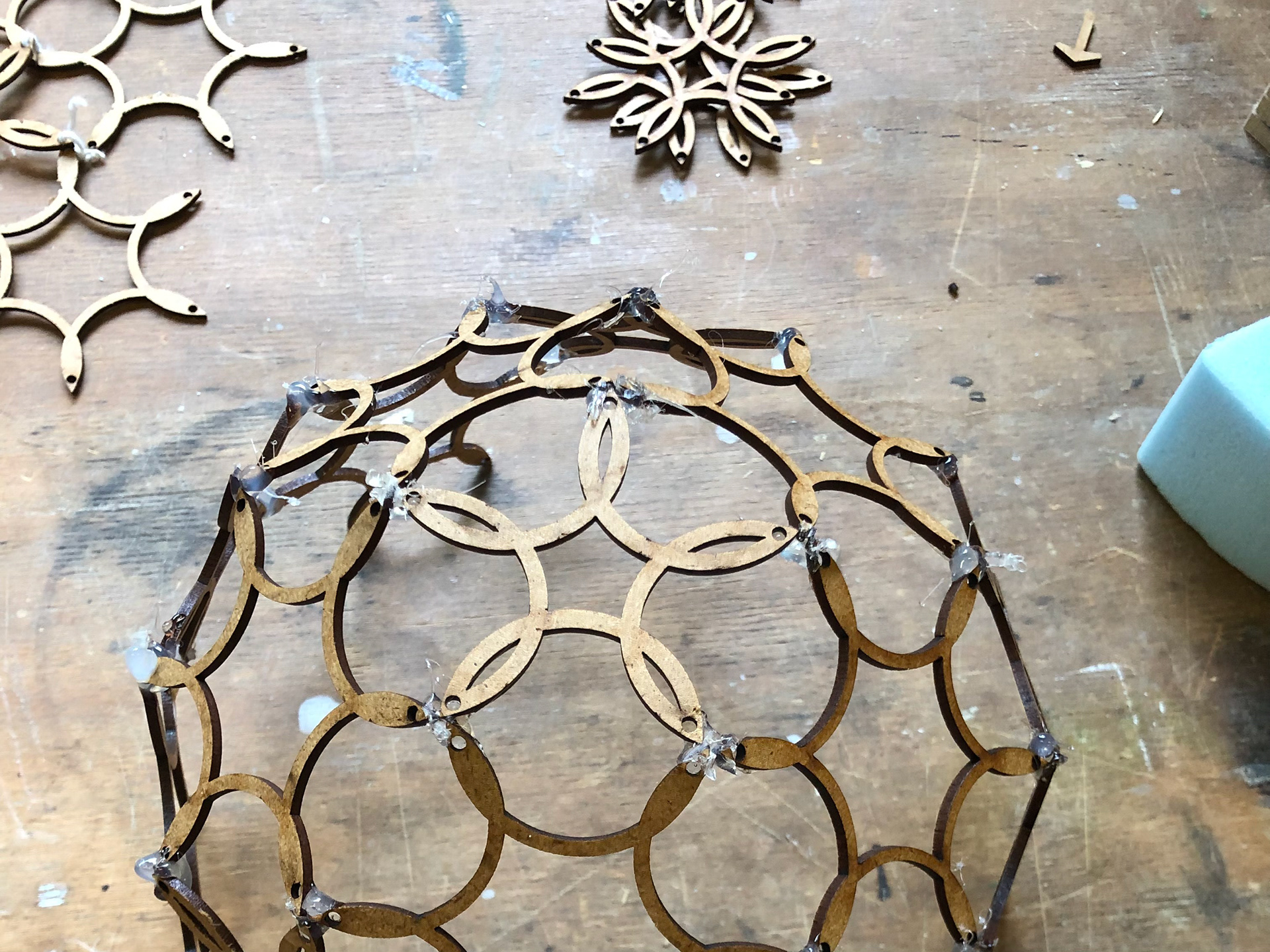The following forms were created within the scope of the module "Experimental Form Generation." Initially, each student was assigned a geometric shape; mine was the truncated icosahedron. We were then supposed to modify and build this shape in its respective modules.
Ductus 1
In this approach, the concept was to break the originally continuous edges of the individual surfaces and only connect through the center of each respective surface. The connection with the other parts now occurs only at the corresponding corners.
As a result, the form has acquired a more intricate and captivating mesh structure, which additionally imparts greater stability to it.
Ductus 2
In this approach, the idea was to modify the base surfaces in such a way that they are no longer recognizable as hexagons and pentagons, but rather to create the illusion that the form consists solely of interconnected rings.
Ductus 3
This approach consists solely of hexagons, while the open space forms the remaining pentagons. What I find intriguing about this form is the contrast, or rather the interplay, between the smooth chromed surfaces and the sharp, "barbed-wire-like" connecting elements.
I created the semi-circular shape of the surfaces by heating and shaping them using a specially crafted mold.
Ductus 4
This approach is composed of a single line, tracing the original edges but occasionally omitting some. It's produced through 3D printing. The structure possesses a gentle springiness while maintaining unexpected stability.
Process
























